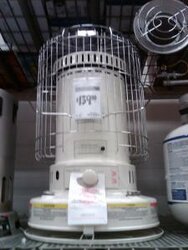Oil and propane here (near Albany, NY) are so darn expensive, I wouldn't mind getting away from oil for backup/supplemental heat and domestic hot water. We have an oil hot water boiler and indirect tank for dhw.
What are the alternatives? Is there such a thing as a heat pump for convectors?
What are the alternatives? Is there such a thing as a heat pump for convectors?



